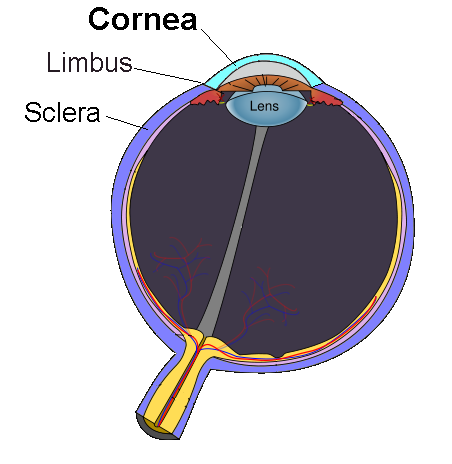Epithelial basement membrane dystrophy
Editor-In-Chief: Prab R Tumpati, MD
Obesity, Sleep & Internal medicine
Founder, WikiMD Wellnesspedia &
W8MD medical weight loss NYC and sleep center NYC
| Epithelial basement membrane dystrophy | |
|---|---|

| |
| Synonyms | Map-dot-fingerprint dystrophy, Cogan's microcystic epithelial dystrophy |
| Pronounce | N/A |
| Specialty | N/A |
| Symptoms | Blurred vision, corneal erosion, dry eye |
| Complications | Recurrent corneal erosion, vision impairment |
| Onset | Usually in adulthood |
| Duration | Chronic |
| Types | N/A |
| Causes | Genetic factors, corneal trauma |
| Risks | Family history, eye surgery |
| Diagnosis | Slit lamp examination, corneal topography |
| Differential diagnosis | Keratoconus, Fuchs' dystrophy |
| Prevention | N/A |
| Treatment | Lubricating eye drops, bandage contact lenses, phototherapeutic keratectomy |
| Medication | N/A |
| Prognosis | Generally good with treatment |
| Frequency | Common |
| Deaths | N/A |
Epithelial Basement Membrane Dystrophy (EBMD), also known as Map-Dot-Fingerprint Dystrophy, is a common corneal dystrophy affecting the corneal epithelium. It is characterized by the presence of abnormal basement membrane production, leading to a variety of corneal surface irregularities.
Pathophysiology[edit | edit source]
EBMD is caused by a defect in the basement membrane of the corneal epithelium. This defect leads to the formation of redundant basement membrane material, which can trap epithelial cells and cause them to become misaligned. The resulting surface irregularities can be seen as maps, dots, and fingerprint-like patterns on the cornea.
Clinical Presentation[edit | edit source]
Patients with EBMD may be asymptomatic or may present with symptoms such as blurred vision, recurrent corneal erosion, and discomfort. The condition is often discovered during a routine eye examination when the characteristic patterns are observed on slit-lamp examination.
Diagnosis[edit | edit source]
Diagnosis of EBMD is primarily clinical, based on the appearance of the cornea under slit-lamp examination. The characteristic map-dot-fingerprint patterns are usually sufficient for diagnosis. In some cases, corneal topography may be used to assess the extent of surface irregularities.
Management[edit | edit source]
Management of EBMD depends on the severity of symptoms. In asymptomatic patients, no treatment may be necessary. For those with recurrent erosions or significant visual disturbance, treatment options include:
- Lubricating eye drops to reduce discomfort.
- Hypertonic saline ointments to reduce corneal edema.
- Bandage contact lenses to protect the corneal surface.
- Anterior stromal puncture or phototherapeutic keratectomy (PTK) for recurrent erosions.
Prognosis[edit | edit source]
The prognosis for patients with EBMD is generally good, especially with appropriate management of symptoms. However, recurrent erosions can be a chronic issue requiring ongoing treatment.
See also[edit | edit source]
Search WikiMD
Ad.Tired of being Overweight? Try W8MD's physician weight loss program.
Semaglutide (Ozempic / Wegovy and Tirzepatide (Mounjaro / Zepbound) available.
Advertise on WikiMD
|
WikiMD's Wellness Encyclopedia |
| Let Food Be Thy Medicine Medicine Thy Food - Hippocrates |
Translate this page: - East Asian
中文,
日本,
한국어,
South Asian
हिन्दी,
தமிழ்,
తెలుగు,
Urdu,
ಕನ್ನಡ,
Southeast Asian
Indonesian,
Vietnamese,
Thai,
မြန်မာဘာသာ,
বাংলা
European
español,
Deutsch,
français,
Greek,
português do Brasil,
polski,
română,
русский,
Nederlands,
norsk,
svenska,
suomi,
Italian
Middle Eastern & African
عربى,
Turkish,
Persian,
Hebrew,
Afrikaans,
isiZulu,
Kiswahili,
Other
Bulgarian,
Hungarian,
Czech,
Swedish,
മലയാളം,
मराठी,
ਪੰਜਾਬੀ,
ગુજરાતી,
Portuguese,
Ukrainian
Medical Disclaimer: WikiMD is not a substitute for professional medical advice. The information on WikiMD is provided as an information resource only, may be incorrect, outdated or misleading, and is not to be used or relied on for any diagnostic or treatment purposes. Please consult your health care provider before making any healthcare decisions or for guidance about a specific medical condition. WikiMD expressly disclaims responsibility, and shall have no liability, for any damages, loss, injury, or liability whatsoever suffered as a result of your reliance on the information contained in this site. By visiting this site you agree to the foregoing terms and conditions, which may from time to time be changed or supplemented by WikiMD. If you do not agree to the foregoing terms and conditions, you should not enter or use this site. See full disclaimer.
Credits:Most images are courtesy of Wikimedia commons, and templates, categories Wikipedia, licensed under CC BY SA or similar.
Contributors: Prab R. Tumpati, MD

